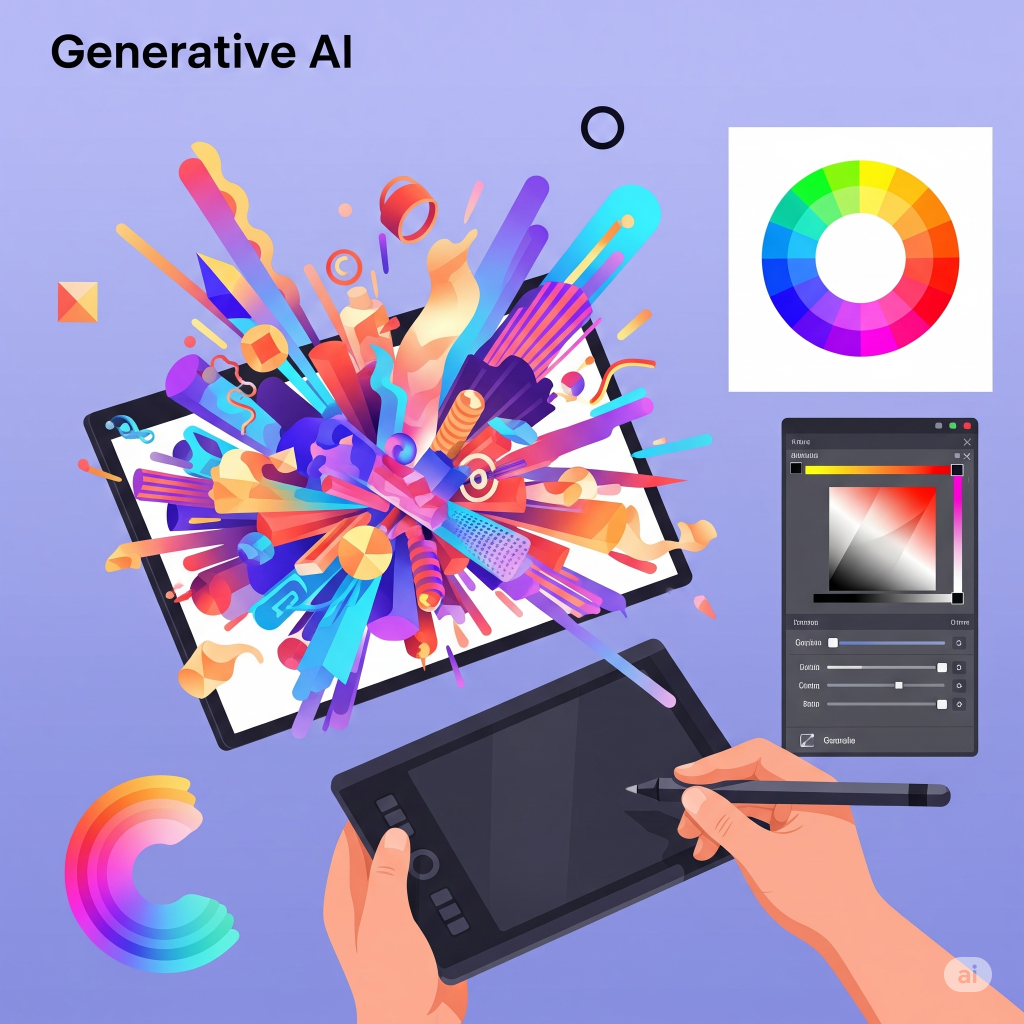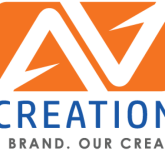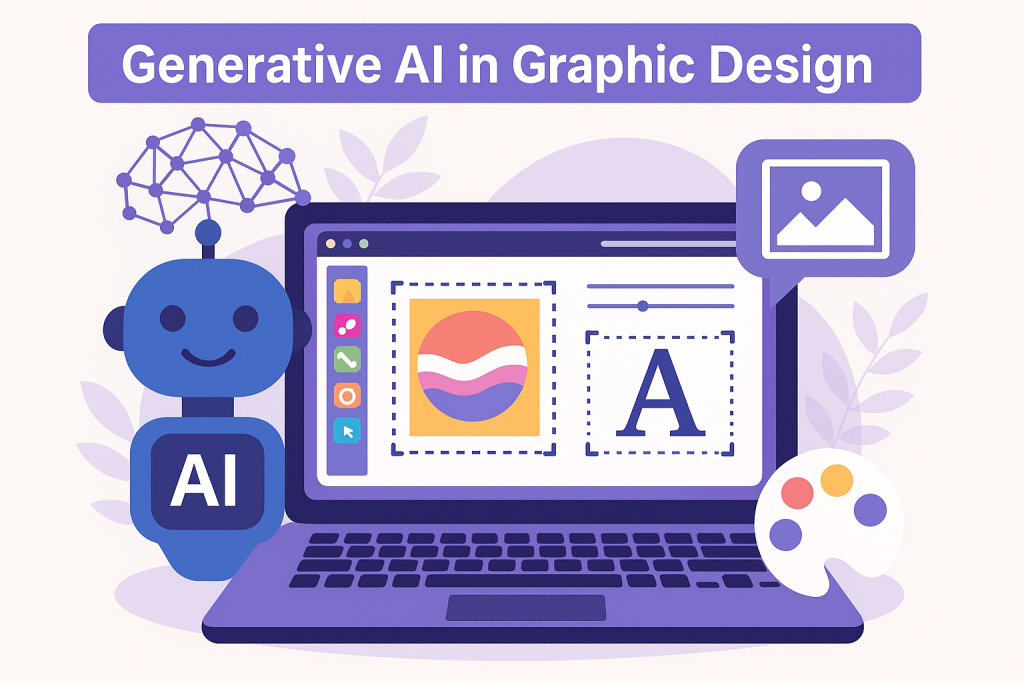Generative AI in Graphic Design: Revolutionizing Creativity
In the ever-evolving world of graphic design, Generative AI has emerged as a game-changer. It’s not just a buzzword anymore—this technology is actively reshaping how designers think, create, and deliver visuals. Whether you’re a freelancer, agency, or brand, understanding how generative AI works in design can unlock new levels of creativity and efficiency.
What Is Generative AI in Design?
Generative AI is the application of artificial intelligence to create content—like images, layouts, or illustrations—from user input, style references, or learned data. In graphic design, it entails mechanizing design tasks that formerly consumed hours or even days. From creating layout alternatives to crafting one-of-a-kind branding assets, generative AI allows designers to spend more time on strategic and creative decisions, not routine work.

Key Benefits for Designers
- Faster Design Turnaround
Generative AI applications such as Adobe Firefly, Midjourney, or DALL·E enable designers to quickly prototype concepts and create variations of ideas in minutes. This significantly decreases production time and speeds up creative workflows. - Inspiration and Ideation
Struck by a creative block? AI applications can provide new ideas, guiding designers to try out unconventional styles, color schemes, or layouts. It is a creative collaborator more than a substitute. - Personalization at Scale
Generative AI enables dynamic content generation for multiple audiences. As a case in point, social media graphics or website headers can be automatically personalized for different platforms and demographics. - Design for Non-Designers
Thanks to easy-to-use AI software, individuals with little design expertise can produce professional-looking images, making small businesses and startups equal players in the visual economy.
Ethical and Creative Considerations
While the benefits are tremendous, there are issues as well. Intellectual property rights, authenticity, and creative originality are perennial issues. Generative AI tends to borrow from enormous datasets, which can include copyrighted materials. Designers, therefore, have to use the tools responsibly and remain transparent to clients regarding AI-created assets.
Also, too much use of AI can potentially water down the human element or emotional resonance that designers contribute. Ideally, it is a hybrid system, where the heavy work is done by AI and designers fine-tune and edit the results with purpose and acumen.
The Future of AI in Design
Generative AI will not displace graphic designers—it will supercharge them. As technology becomes more precise, designers will need to refine their storytelling, strategic, and art direction capabilities. The future is for those who can integrate technology with creativity seamlessly.
Conclusion
Generative AI graphic design is not only a trend—it’s a revolution. By adopting it with caution, designers will be able to improve their craft, open up new creative horizons, and stay competitive in an evolving digital landscape.
FAQ
Q1. What is Generative AI in graphic design?
Ans: Generative AI in graphic design refers to the use of artificial intelligence to automatically create visual content like logos, layouts, and illustrations.
Q2. How does Generative AI benefit designers?
Ans: It speeds up the creative process, automates repetitive tasks, and helps generate fresh ideas for branding, advertising, and visual communication.
Q3. Can Generative AI replace human graphic designers?
Ans: No, it complements human creativity by assisting with design elements, but emotional intelligence and branding vision still need a human touch.
Q4. What are common tools for Generative AI in design?
Ans: Popular tools include Adobe Firefly, Canva AI, DALL·E, Midjourney, and RunwayML, offering text-to-image, auto-layouts, and generative branding features.
Q5. Is Generative AI suitable for all types of design projects?
Ans: It’s great for concept generation, branding, and digital content, but complex, highly-customized projects still benefit from manual design expertise.

